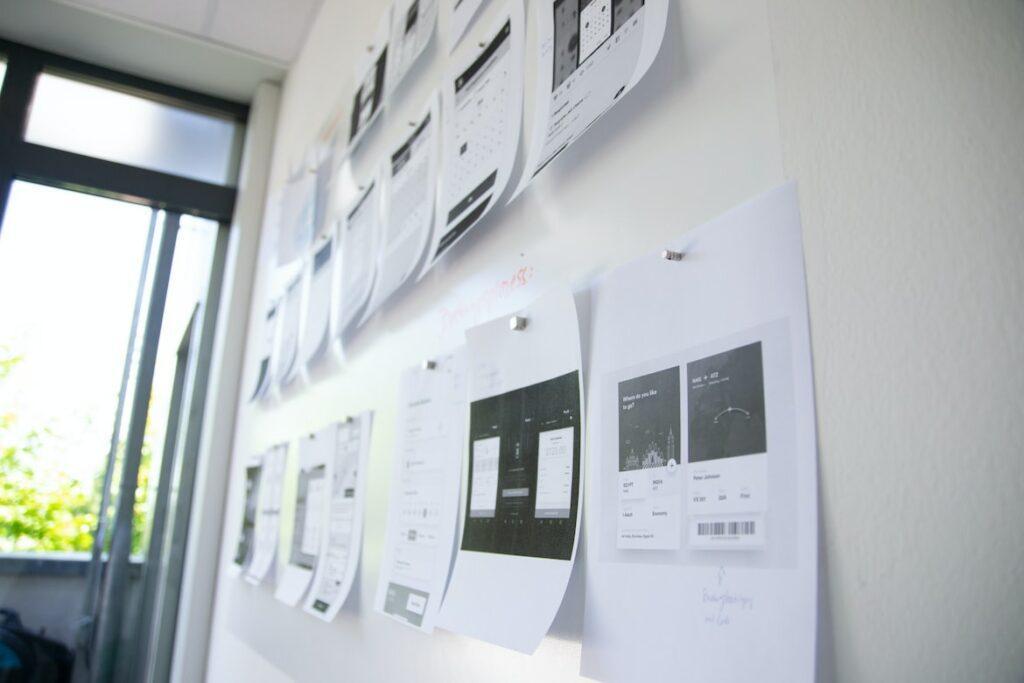In our increasingly digital world, creating a compelling digital product that captivates and engages users while meeting business objectives is a complex endeavour. At the heart of this endeavour lies an indispensable element—UX/UI design. User Experience (UX) and User Interface (UI) design are vital ingredients that dictate the success of any digital product. This article will examine the UX/UI design procedure that a digital product design agency typically follows in depth.
Understanding UX/UI Design
Before we embark on discussing the design process, it’s important to define what UX and UI design entails. User experience design revolves around enhancing user satisfaction by improving the usability, accessibility, and pleasure derived from interacting with a product. Meanwhile, user interface design aims to make the user’s interaction as straightforward and efficient as possible, focusing on the aesthetics and overall look and feel of the product.
While these two aspects often go hand in hand, they serve different roles. UX design is more analytical and technical, focusing on a product’s functionality and user-centred design. In contrast, UI design is more akin to graphic design, emphasizing a product’s aesthetics and visual communication.
Stages of the UX/UI Design Process in Detail
The UX/UI design process can differ between agencies and projects, but it generally encompasses several key stages: research, information architecture, wireframing, prototyping, user testing, visual design, implementation, and evaluation.
Research
The design process kicks off with research. This stage involves understanding user needs, market trends, and overarching business goals. User interviews, surveys, market analyses, and competitor research are some of the methods utilized to gather invaluable insights that guide the subsequent design process.
Information Architecture
Upon concluding the research phase, the next step is to structure and organize the information within the product, known as information architecture. This step involves devising a logical and intuitive navigation system for your digital product, facilitating users in finding the information they seek.
Wireframing
Wireframing is the process of crafting a basic visual guide to represent the product layout. It bears a resemblance to a blueprint of the product, displaying the structure of pages devoid of any design elements or colours. Wireframes assist stakeholders in comprehending the product’s functionality and flow.
Prototyping
The prototype stage involves the development of a testable model of the product. This allows designers to experiment with various ideas while users can interact with the product, providing immediate feedback. Prototypes range from low-fidelity sketches to high-fidelity models that closely mimic the final product.
User Testing
User testing is a crucial phase where the prototype is put to the test by target users. Their interactions and feedback help identify any usability issues, which are then refined to enhance the product’s design and functionality.
Visual Design
Visual design is the stage where the product begins to assume its final form. Designers apply colours, fonts, images, and animations to enrich user interaction and the overall aesthetic appeal of the product. This step necessitates a keen eye for detail and a robust understanding of visual design principles.

Implementation and Evaluation
The final stage involves close collaboration with developers to ensure the design is correctly implemented. Post-launch, it’s vital to continuously evaluate the design based on user feedback and analytics, making necessary adjustments to improve the user experience.
Role of a Digital Product Agency in UX/UI Design
A digital product agency plays an instrumental role in navigating the UX/UI design process. With a team of proficient designers and a wealth of experience, they can provide expert guidance and innovative solutions for businesses.
Hiring a professional agency ensures a seamless, efficient design process and a final product that is not only aesthetically pleasing but also delivers a superior user experience. Overall, working with an agency offers such benefits as:
- Expertise: Agencies bring a wealth of knowledge and experience in UX and UI design, ensuring your product is in capable hands.
- Resources: They have the necessary tools and resources to execute a successful design project.
- Time-saving: Outsourcing the design process allows you to focus on other critical aspects of your business.
- Ongoing Support: Many agencies offer post-launch support and services, ensuring your product continues to deliver an optimal user experience.
Final Say
Each stage of the UX/UI design process plays a critical role in shaping a product that resonates with users and aligns with business objectives. By partnering with a digital product agency, businesses can leverage professional expertise to navigate this process, resulting in a well-designed product that stands out in the crowded digital landscape. An investment in professional UX/UI design is an investment in the future success of your business.

